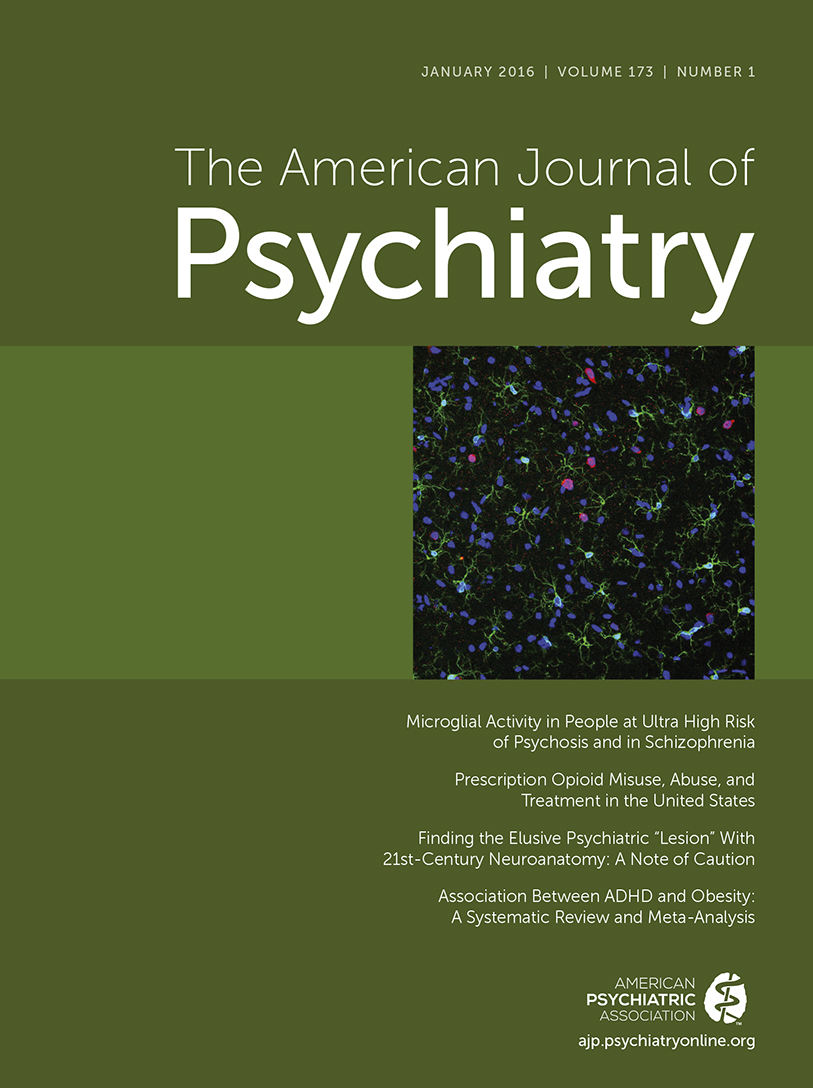Microglial Activity in People at Ultra High Risk of Psychosis and in Schizophrenia: An [11C]PBR28 PET Brain Imaging Study
Abstract
Objective:
The purpose of this study was to determine whether microglial activity, measured using translocator-protein positron emission tomography (PET) imaging, is increased in unmedicated persons presenting with subclinical symptoms indicating that they are at ultra high risk of psychosis and to determine whether microglial activity is elevated in schizophrenia after controlling for a translocator-specific genetic polymorphism.
Method:
The authors used the second-generation radioligand [11C]PBR28 and PET to image microglial activity in the brains of participants at ultra high risk for psychosis. Participants were recruited from early intervention centers. The authors also imaged a cohort of patients with schizophrenia and matched healthy subjects for comparison. In total, 56 individuals completed the study. At screening, participants were genotyped to account for the rs6971 polymorphism in the gene encoding the 18Kd translocator protein. The main outcome measure was total gray matter [11C]PBR28 binding ratio, representing microglial activity.
Results:
[11C]PBR28 binding ratio in gray matter was elevated in ultra-high-risk participants compared with matched comparison subjects (Cohen’s d >1.2) and was positively correlated with symptom severity (r=0.730). Patients with schizophrenia also demonstrated elevated microglial activity relative to matched comparison subjects (Cohen’s d >1.7).
Conclusions:
Microglial activity is elevated in patients with schizophrenia and in persons with subclinical symptoms who are at ultra high risk of psychosis and is related to at-risk symptom severity. These findings suggest that neuroinflammation is linked to the risk of psychosis and related disorders, as well as the expression of subclinical symptoms.



